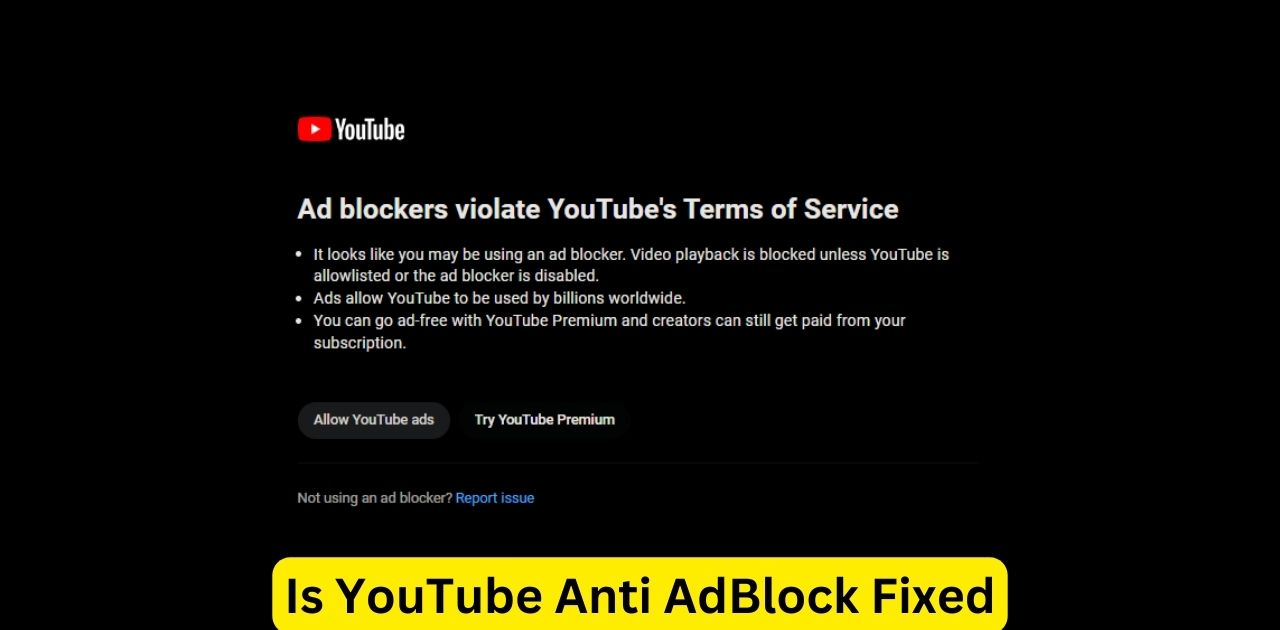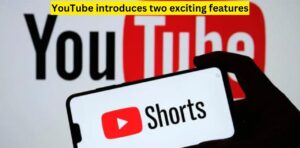Welcome to the digital age conundrum where the unstoppable force of adblockers meets the immovable object that is YouTube. In the red corner, we have viewers, armed with their adblocking shields, looking for a seamless video experience. In the blue corner, YouTube flexes its anti adblock muscles, aiming to protect the lifeblood of its platform – advertisements.
But what happens when this technological tug-of-war affects both the gladiators and the spectators? This article aims to dissect this battle, exploring whether the antia dblock feature YouTube has implemented is now a thing of the past or if it’s still in the ring, duking it out with user ingenuity.
Join us as we dive into the heart of the matter, examining how this feature impacts everyone from casual cat video aficionados to the most dedicated of vloggers. Has YouTube’s anti adblock fix been outsmarted, or is it still standing tall? It’s time to uncover the truth and, possibly, unearth a couple of tricks to enhance your viewing pleasure.
Understanding YouTube’s Anti Adblock Feature
When YouTube rolled out its anti adblock defenses, it was like a game of cat and mouse – with adblockers as the wily rodents and YouTube as the determined feline. The main purpose of this feature was to safeguard advertising revenue, which keeps the platform’s wheels greased and the content flowing. But how does this digital fortress work? Imagine a bouncer at the club’s door, but instead of checking IDs, it’s scanning for adblocking software. If it finds one, it either blocks access to the video or pauses it until the adblocker is disabled.
The backlash from users and creators was as loud as a rock concert. Users voiced their concerns over privacy and uninterrupted viewing, while creators were caught between a rock and a hard place—with ad revenue on the line. This feature’s success is a balancing act; it’s about protecting profits while not pushing away the very audience that fuels YouTube’s existence.
The Controversy Surrounding the Anti Adblock Feature
The introduction of YouTube’s anti adblock feature stirred a pot of controversy, brewing a frothy debate between two camps. On one side, we have the staunch defenders of ad-supported content, arguing that ads are the lifeblood of the platform and its creators. On the other, privacy champions and user-experience purists who see the feature as an intrusive gatecrasher at the party of seamless streaming.
- Privacy Concerns: The feature’s ability to track user data under the pretext of ad display has raised eyebrows and hackles alike, striking a nerve with those wary of big brother’s watchful eyes.
- User Experience: Viewers accustomed to pristine, ad-free vistas have found themselves back in the bustling bazaar of commercial breaks, which for some, is a significant step back in their viewing experience.
- Legal Ramifications: YouTube’s tightrope walk over the sea of legalities poses questions. Could this feature invite legal challenges under the banner of user rights and anti-competitive behavior?
Whether YouTube’s anti adblock measures are a necessary evil or a user-experience faux pas, they have undoubtedly ruffled feathers and ignited a debate that questions the balance between profitability and user satisfaction.
Is the Anti Adblock Feature Fixed?
As the digital tug-of-war continues, YouTube has been arm-wrestling with adblocker aficionados, resulting in a cat-and-mouse game of updates and countermeasures. The latest update promises to strengthen the platform’s defenses against ad-blocking software, but the effectiveness is a heated topic of debate. Users report a mix of experiences; some say their adblocker now waves the white flag, while others claim to have found the digital equivalent of a secret passage, bypassing the blocks with ease.
- YouTube’s updates – Recent changes are designed to outsmart adblockers, yet their efficiency is a contentious issue.
- Ongoing issues – Savvy netizens are still discovering and sharing workarounds, proving that the feature is not entirely foolproof.
- YouTube’s response – The platform remains somewhat tight-lipped, adding to the intrigue of the situation.
In sum, the “anti adblock” feature on YouTube remains a moveable feast, with some users celebrating a victory over intrusive ads, while others continue the search for the holy grail of uninterrupted streaming.
Solutions for Users Dealing with the Anti Adblock Feature
Staring at the screen, you see another unskippable ad—your adblocker has been benched yet again by YouTube’s latest move. But fear not, intrepid viewer, for you have a few tricks up your digital sleeve. First, dive into the sea of alternative adblockers that claim to outmaneuver YouTube’s defenses. Some developers focus exclusively on these digital duels, ensuring their software stays one step ahead.
Next, consider the path of peace by whitelisting your favorite channels. Yes, it’s a bit of giving in, but it can be a harmonious compromise, supporting creators while skimming off fewer ads. If you’re tech-savvy, you could also try disabling the feature through browser extensions or advanced settings—though this may feel like trekking through a digital jungle without a map.
- Risks and Drawbacks: Tread carefully, as not all solutions are created equal. Some might lead you down a path lined with privacy concerns or even malware.
- Tips and Tricks: Keep your eyes peeled for user forums and tech blogs that often share the latest loopholes—just remember, today’s workaround could be tomorrow’s dead end.
While no solution is foolproof, your quest for an ad-free experience isn’t doomed. The landscape is ever-changing, and so too are the tools at your disposal. Forge ahead with caution, and may your streams be uninterrupted!
Impact on Content Creators
The chessboard of online content is ever-evolving, and YouTube’s “anti adblock” feature has nudged the pieces in a way that’s got content creators feeling like they’re in a bit of a checkmate. When adblockers ride into the sunset, the ad revenue often waves goodbye alongside them. This particularly stings for smaller channels, where every penny counts towards their digital dreams.
- Ad Revenue Downturn: The feature’s introduction can mean a downturn in ad revenue, forcing creators to rethink their monetization strategies.
- Challenges for Smaller Channels: Smaller content creators might face the Hercules task of building an audience while grappling with reduced financial support, underscoring the need for alternative revenue streams.
- Strategic Adaptation: It isn’t all doom and gloom, though. Creators are encouraged to adapt, possibly by engaging more with their audience to understand the impacts and seeking creative solutions like fan funding or merchandise.
For the plucky content creator, knowledge of this issue is half the battle won. With the right mix of innovation and community support, the future could still be as bright as a well-lit vlog.
FAQ’s For Is YouTube Anti AdBlock Fixed?
Does YouTube Adblocker no longer work?
YouTube adblockers may occasionally fail to work due to updates in YouTube’s algorithms, but they generally continue to block most ads effectively.
Is YouTube blocking ad blockers?
YouTube does not directly block ad blockers. However, changes in its algorithms and ad delivery systems can sometimes make ad blockers less effective.
Does YouTube punish for AdBlock?
YouTube does not directly punish users for using AdBlock. However, using AdBlock may affect the revenue of content creators as it blocks ads which are a source of income for them.
Does Ghostery work on YouTube?
Yes, Ghostery can work on YouTube. It is a privacy browser extension that can block ads, stop trackers, and speed up websites.
Conclusion, For Is YouTube Anti AdBlock Fixed?
As the curtain falls on our deep dive into YouTube’s contentious “anti adblock” skirmish, we find ourselves perched on a landscape that’s as dynamic as the videos streaming on the platform. The tug-of-war between undisturbed viewing and revenue generation continues to spark debate, with YouTube finessing its features and users seeking the upper hand.
Evidently, the journey to understanding and navigating this issue is akin to playing a game of cat and mouse. But, with every chess move from YouTube, the community of users and creators adapt, keeping the conversation about digital rights and content monetization lively and relevant. It’s not just about enjoying cat videos without interruption; it’s also a matter of supporting the creative moguls behind the scenes.
As tech aficionados and digital nomads, it’s up to us to share our experiences and insights. Who knows? Your comment could be the beacon that guides someone out of the ad-block labyrinth. So, let the discourse continue, and may the most resourceful solutions prevail.








